Foothill Palo Verde
Little-leaf Palo Verde
Parkinsonia microphylla
Cercidium microphylum
Sponsored Links:
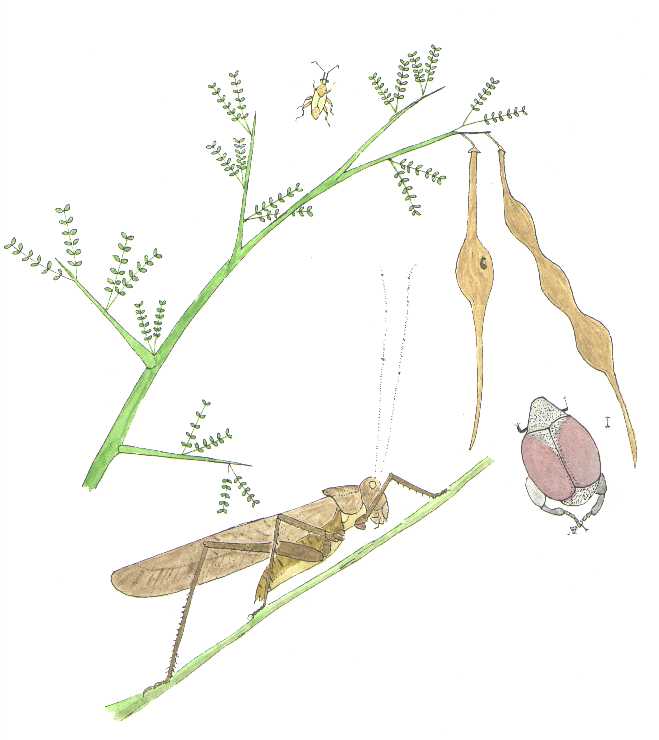
Watercolor from specimens found at Bumble Bee, Arizona, 12 July 1992.
The large insect at lower left is a Shield-back
Katydid. At right is a bruchid beetle shown much larger than the actual size.
Sponsored Link:
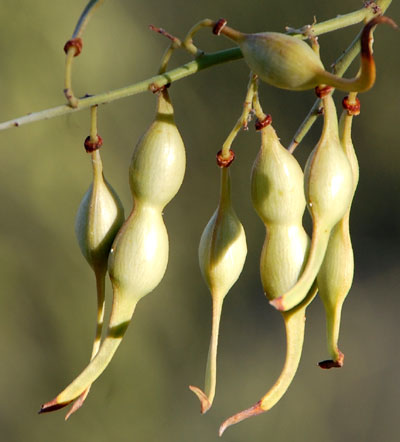
Nearly mature seed pods observed at Cave Creek Park n. of Phoenix, Arizona, USA. 11 June 2011.
TREE: The twigs and branches and most of the main trunk are smooth and
slightly yellow-green.
LEAVES: Two or four sets of ~10, small leaflets form a compound leaf.
Drought and cold deciduous. When the season is changing from moist to dry the
leaves are often eaten in mass my web-spinning caterpillars of a gelechiid
moth. The adult is shown below - click image for more information.
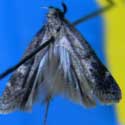
FLOWERS: Abundant blossoms in April and May are pale yellow with five
petals. The
banner petal is usually white. Essentially no flowers open during the
summer. In most areas Foothill Palo Verde will be blooming a week or two later
than Blue Palo Verde.
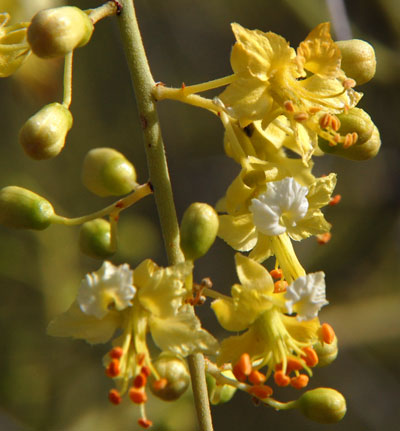
FRUIT: The pods contain smooth, hard, bean-seeds that are slightly
flattened and number 2 to 7 per pod.
RANGE: Abundant. Of all the trees, the Foothill Palo Verde probably
overlaps the range of the Saguaro Cactus most completely. Foothills tend to
grow on rocky slopes often away from washes or otherwise much drier sites than
Blue Palo Verde.
ARMED: The rather weak spines of Foothill Palo Verde are straight and
located at the tips of short branchlets.
Before they harden, the young seed pods of both palo verdes can be boiled and eaten like peas-in-the-pod.
As would be expected for a dominant plant in the community there are many kinds of insects and other organisms that use foothill palo verde as a primary host. Then there are the many predators that work to prey on these herbivores. The seeds of both palo verdes are heavily attacked by seed feeding bruchid beetles (bean weevils). Perfectly round emergence holes are left after the seed has been hollowed out by a developing larva. Two common genera are Mimosestes and Stator.
The first flush of leaves in spring or after the start of summer rains are the most nutritious and support the greatest populations and diversity of herbivores. Among the caterpillars found munching the leaves may be Hubbard's Silk Moth -- Sphingicampa hubbardi. This is easily one of the most spectacular and, quite honestly, beautiful ‘worm’ to be found in the desert.
Mature palo verdes are frequently host for desert mistletoe, a hemi-parasitic plant.

Hubbard's Silk
|

Shield-backed
|
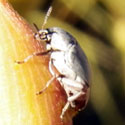
Palo Verde
|
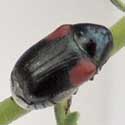
Red-shouldered
|
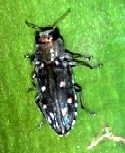
Round-headed
|
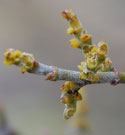
Desert Mistletoe |
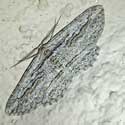
Oblique Looper
|